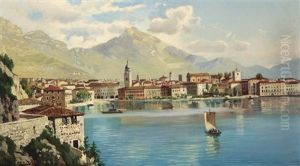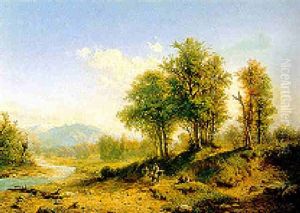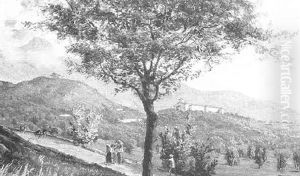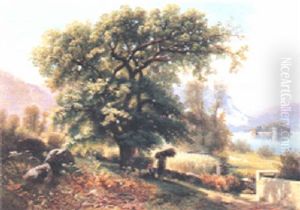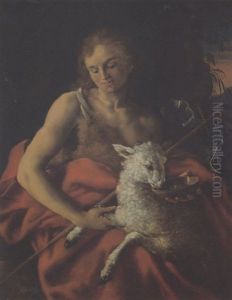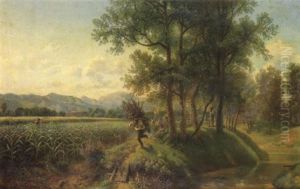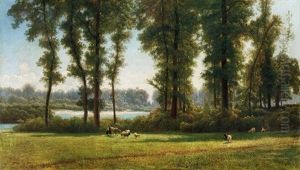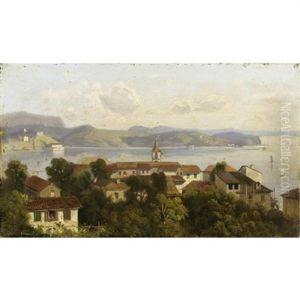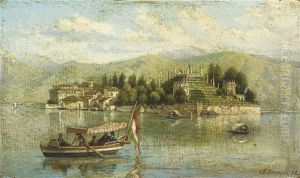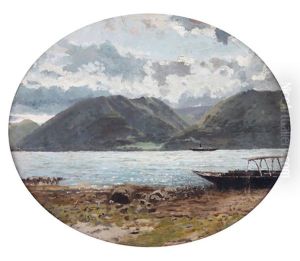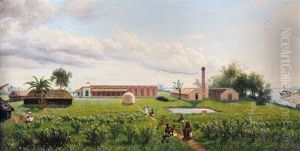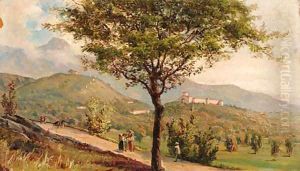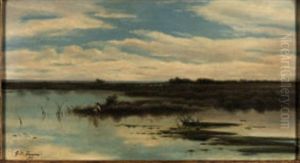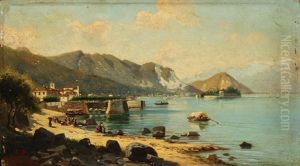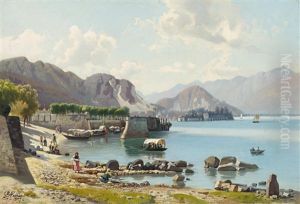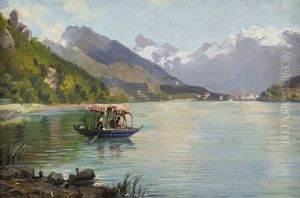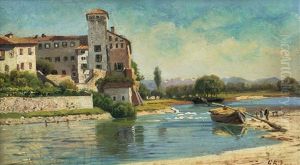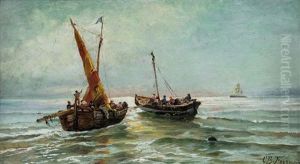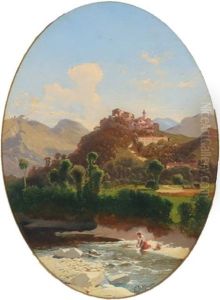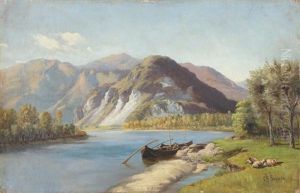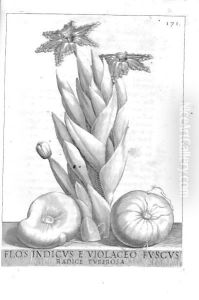Giovanni Battista Ferrari Paintings
Giovanni Battista Ferrari, born in Siena, Italy, in 1584, was a multifaceted figure of the early modern period, whose contributions spanned the fields of botany, art, and literature. Though not as widely recognized today as some of his contemporaries, Ferrari's work, particularly in botany, left a lasting impact on the scientific and artistic communities of his time and thereafter. His life and works offer a fascinating glimpse into the intellectual and cultural milieu of 17th-century Italy, where the boundaries between science, art, and literature were often fluid and interconnected.
Ferrari is perhaps best known for his seminal work in botany, 'Flora Overo Cultura di Fiori' (1633), which translates to 'Flora or the Culture of Flowers'. This work was groundbreaking in its detailed descriptions and illustrations of flowers, integrating scientific rigor with artistic beauty. The engravings in 'Flora Overo Cultura di Fiori' were not only scientifically accurate but also aesthetically pleasing, reflecting the baroque era's fascination with the natural world's intricacy and splendor. Ferrari's contributions to botany were not limited to this publication; he was deeply involved in the study of plants, contributing to the knowledge of plant cultivation and classification in an era that laid the foundations for modern botany.
Apart from his botanical studies, Ferrari was also engaged in the broader cultural and intellectual currents of his time. He was a Jesuit priest, which placed him at the heart of the Counter-Reformation's intellectual endeavors. This position allowed him to interact with a network of scholars, artists, and scientists across Europe. His works reflect a deep engagement with the religious, philosophical, and scientific debates of his day, illustrating how the Jesuit order was a crucial conduit for the exchange of ideas across diverse fields.
Ferrari's legacy is a testament to the Renaissance and Baroque periods' interdisciplinary approach to knowledge. His work in botany, while perhaps his most enduring contribution, was part of a broader intellectual pursuit that included interests in linguistics, theology, and art. Ferrari's life and works embody the era's spirit, where the pursuit of knowledge was not confined to single disciplines but was a holistic endeavor that sought to unify the scientific, artistic, and spiritual dimensions of human experience. He died in Siena in 1655, leaving behind a body of work that continues to be of interest to historians, botanists, and art historians alike.
